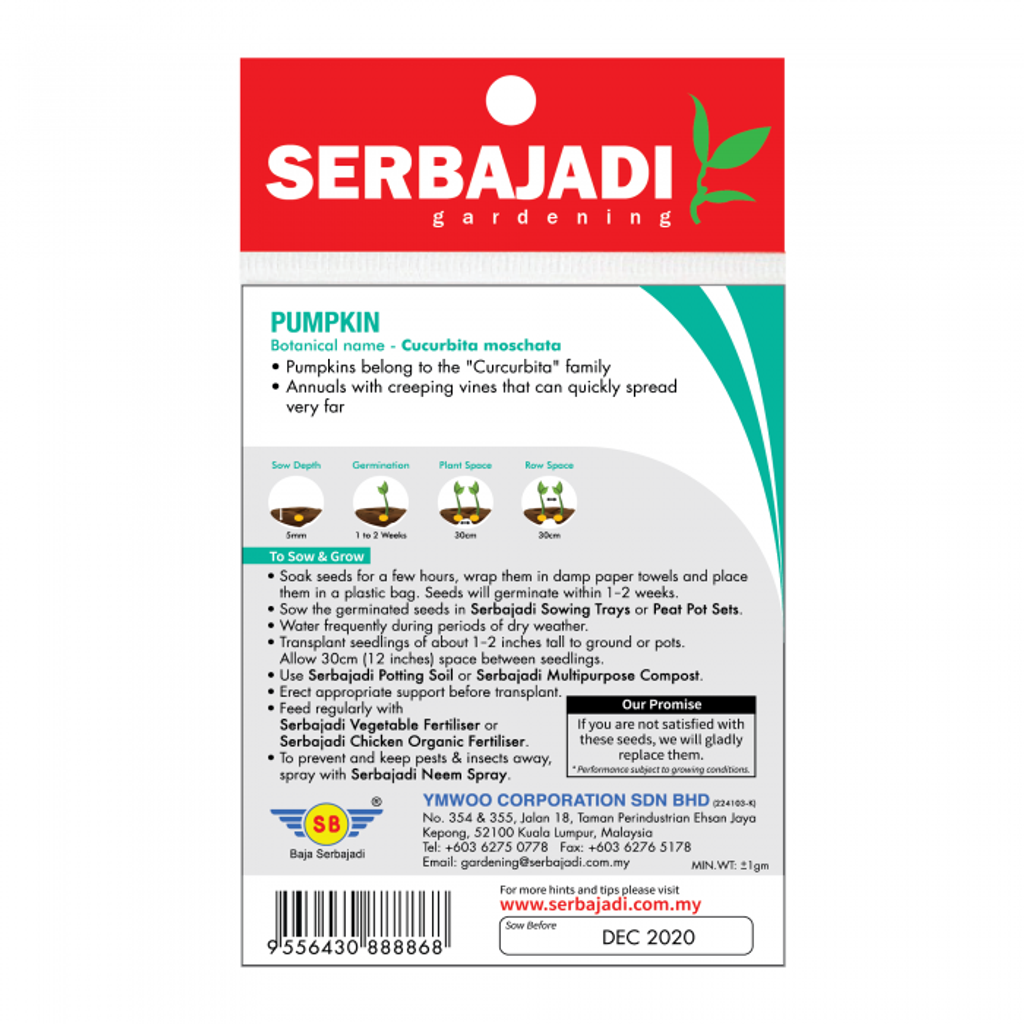Serbajadi Seeds F1 hybrid Pumpkin - Labu ( BBS035 ) (+/- 55 Seeds)
Serbajadi F1 hybrid Pumpkin - Cucurbita moschata
Pumpkins belong to the "Curcurbita" family. Everybody loves pumpkins. People are fascinated by them. Pumpkins are tender annuals with creeping vines that can quickly spread very far and soft round stems with large fruits. Pumpkins can be cooked in a variety of ways as a vegetable or a soup. They can be used in dessert or main dish recipes. The seeds can be roasted or toasted in an oven and enjoyed as a snack, similar to sunflower seeds. Pumpkin seeds also contain zinc, which is useful for testosterone production as well as magnesium, useful for inducing sleep. Pumpkins are swell decorative items for Halloween. Whole, uncut pumpkins can be stored at room temperature for several months, but keep them away from direct light or extreme temperatures.
Type of vegetable: Fleshy fruit
Edible parts: The young leaves, shoots and flowers and mature fruits can all be eaten.
DIRECTION OF USE
Best soil: Pumpkins are big feeders. They prefer a well-drained light, sandy loam that’s rich in humus and slightly alkaline in a sunny spot. Add generous supplies of compost. Fertilise on a regular basis. Use a high nitrogen formula in early plant growth. Switch over to a fertilizer high in Phosphorous (the middle number) just before the blooming period.
How to plant: Pumpkin plants can be started indoors in biodegrable pots or they can be directly seeded into your garden 15 cm apart from each other. They will germinate in about 8 – 10 days. Remove the first flowers if they appear soon after transplanting. Pumpkin seeds can be planted in hills four to six feet apart Sow four to six seeds per hill, thinning to two to three. Or, plant in rows six inches apart, thinning to 1 to 3 feet apart, depending upon how much space you have.
When to harvest: 100-120 days. It's easy to tell when a pumpkin is ripe. It turns a bright orange. When they have a hard skin and cracked stem. Days to maturity vary widely, depending upon variety
How to harvest: Use a sharp knife to cut the stem 1 inch above the fruit. And, never carry a pumpkin by the stem, as it can break.
Care: Pumpkins need lots of water. Try to keep the soil moist, not wet, at all times. Mulch with grass, straw, or leaves. Add generous supplies of compost. May be trained on trellise and fences if sling-style support is used for ripening the fruit. It is also important to avoid getting the leaves wet, if possible. Heat and humidity is the perfect ingredient for powdery mildew, a major problem for your pumpkin patch. Also, avoid watering near dark.
STORAGE
Keep away from children and pets.
Store in cool and dry place away from direct sunlight.


